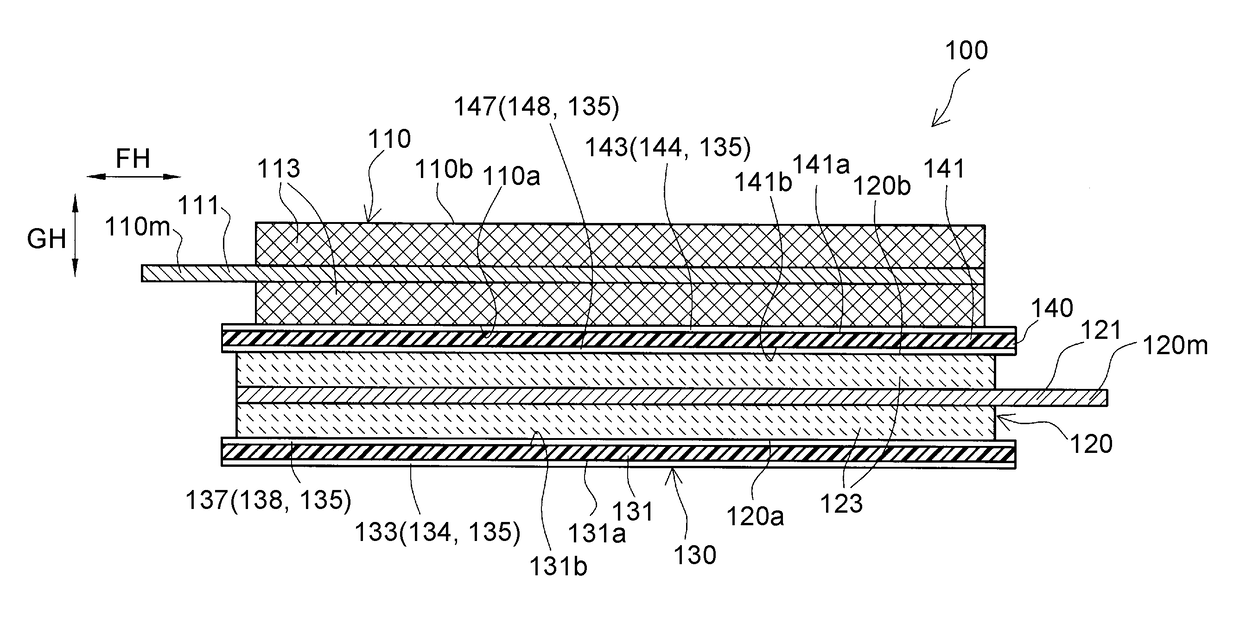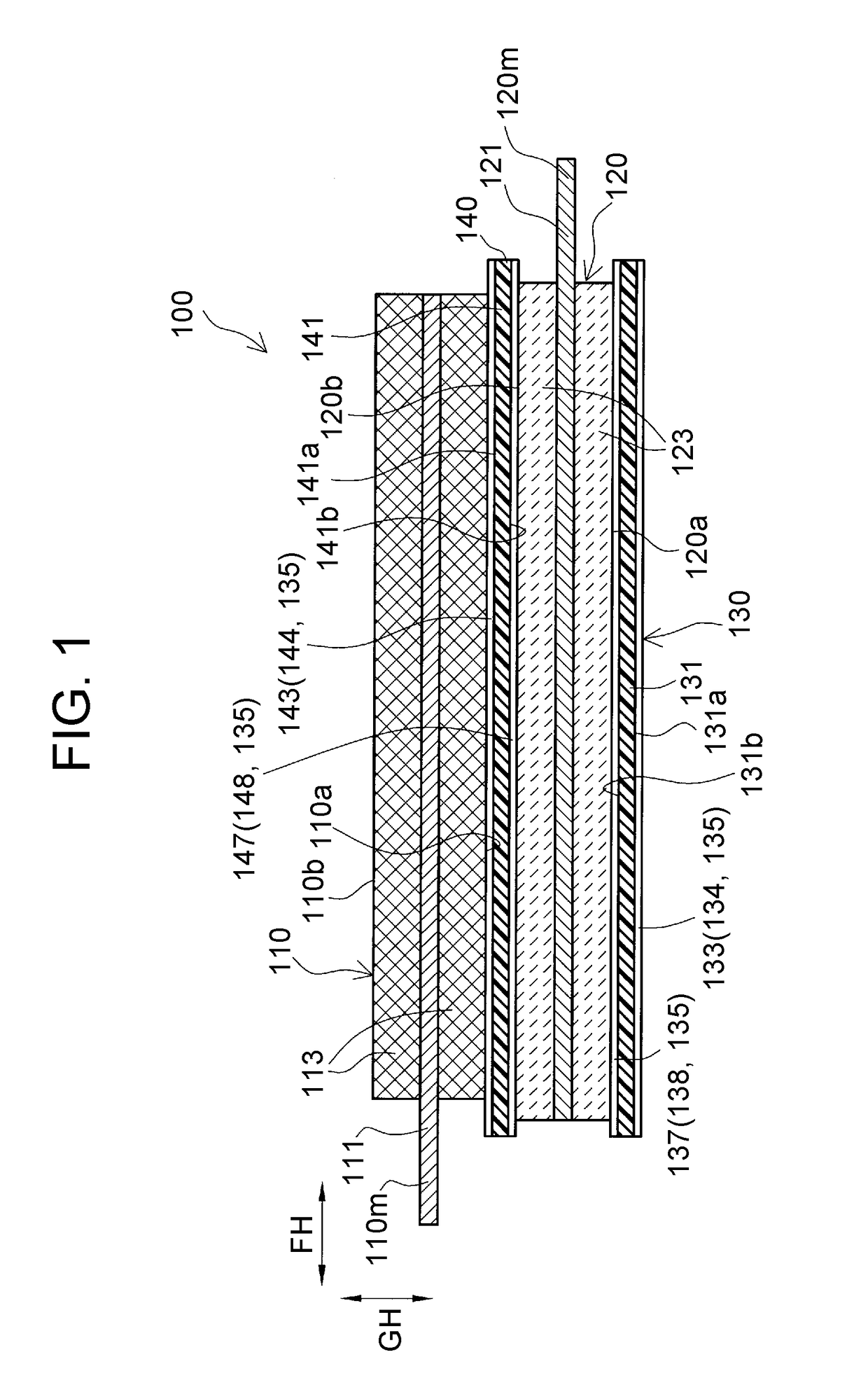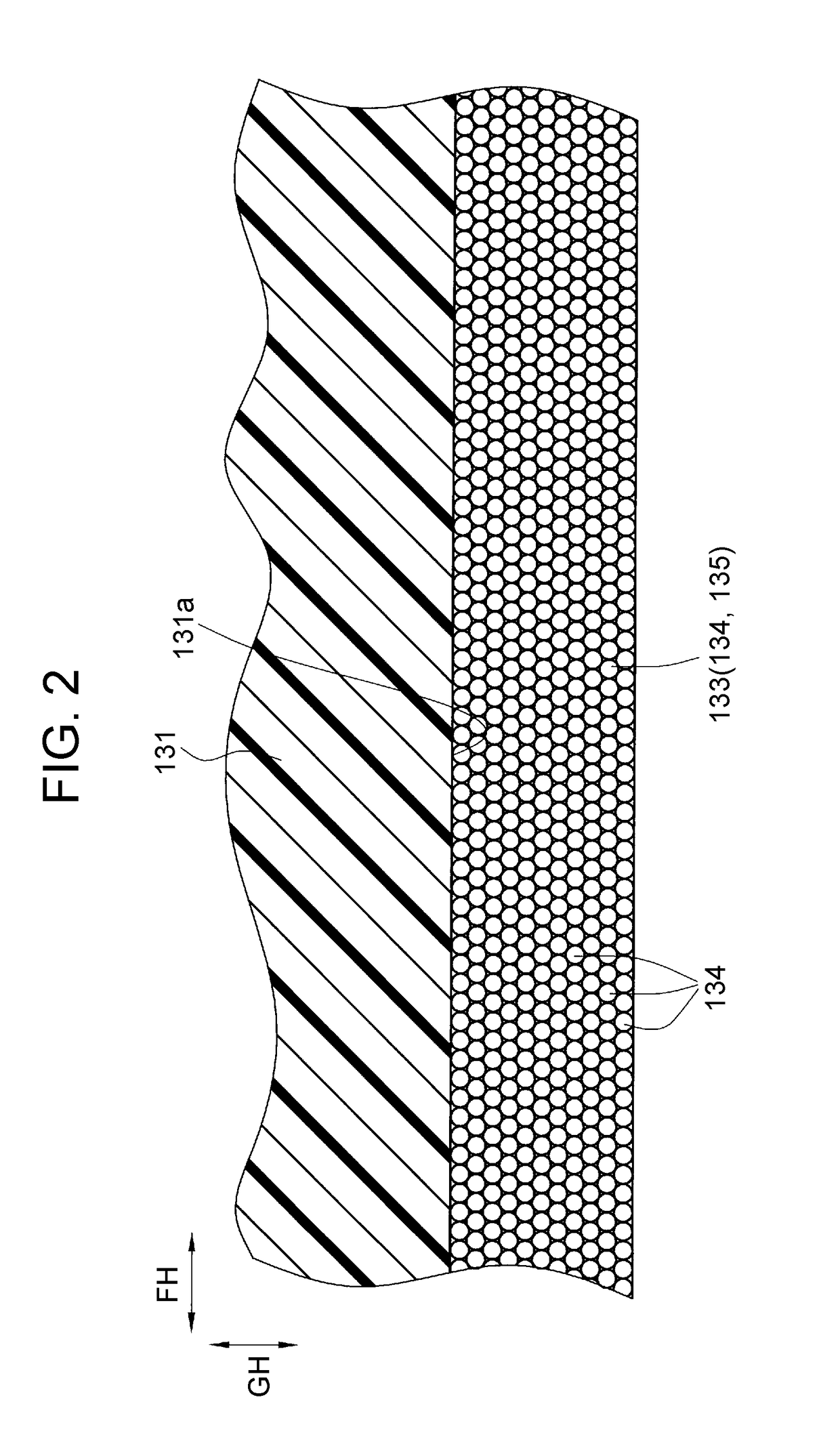Electrode stack and battery manufacturing method
a technology of electrode stack and battery, which is applied in the direction of sustainable manufacturing/processing, wound/folded electrode electrodes, batteries, etc., can solve the problems of small contact area, difficult to realize inexpensive batteries, and increase the manufacturing cost of electrode assemblies and batteries
- Summary
- Abstract
- Description
- Claims
- Application Information
AI Technical Summary
Benefits of technology
Problems solved by technology
Method used
Image
Examples
Embodiment Construction
[0032]An embodiment of the present disclosure will be described below with reference to the drawings. FIG. 1 is a sectional view of an electrode stack 100 according to the embodiment. FIG. 2 is a partially enlarged sectional view of the electrode stack 100, showing a first bonding layer 133 and its vicinity, and FIG. 3 is a partially enlarged sectional view thereof, showing a second bonding layer 143 and its vicinity. FIG. 4 shows an electrode assembly 20 formed by stacking a plurality of electrode stacks 100. FIG. 5 and FIG. 6 are respectively a perspective view and a sectional view of a battery 1 including the electrode assembly 20. For the following description, a short-side direction EH, a long-side direction FH, and a thickness direction GH of the electrode stack 100 are defined as the directions indicated in FIG. 1 to FIG. 6. Moreover, for the following description, a battery short-side direction BH, a battery long-side direction CH, and a battery thickness direction DH of the...
PUM
| Property | Measurement | Unit |
|---|---|---|
| particle size | aaaaa | aaaaa |
| particle size | aaaaa | aaaaa |
| thickness | aaaaa | aaaaa |
Abstract
Description
Claims
Application Information
 Login to View More
Login to View More - R&D
- Intellectual Property
- Life Sciences
- Materials
- Tech Scout
- Unparalleled Data Quality
- Higher Quality Content
- 60% Fewer Hallucinations
Browse by: Latest US Patents, China's latest patents, Technical Efficacy Thesaurus, Application Domain, Technology Topic, Popular Technical Reports.
© 2025 PatSnap. All rights reserved.Legal|Privacy policy|Modern Slavery Act Transparency Statement|Sitemap|About US| Contact US: help@patsnap.com



